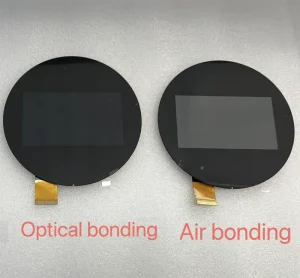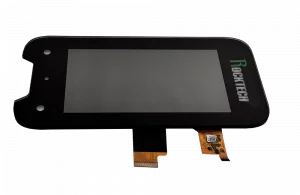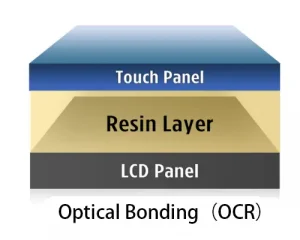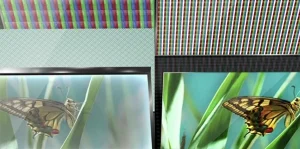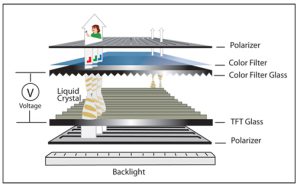From the parking meter you pay at to the industrial handheld in a warehouse, clear screens in bright light are essential. Standard displays fail in these conditions, becoming washed out and unreadable. The solution lies in a specialized category of screens designed for clarity against the elements. This article breaks down the core technologies, focusing on the science that makes a sunlight readable TFT LCD perform where others fail, making it a cornerstone of modern TFT outdoor display technology.
What is a Sunlight Readable TFT LCD and Why Do I Need One?
The fundamental challenge for any outdoor screen is ambient light. Direct sunlight can exceed 100,000 nits (a unit of luminance), completely overwhelming a typical 250-nit office monitor. The key is the contrast ratio—the difference between the brightest white and the darkest black. Sunlight reflection destroys this ratio.
A sunlight readable TFT LCD is not merely a brighter panel; it is an integrated system engineered to combat this challenge through two primary methods: generating its own intense, controllable light and employing advanced techniques to minimize surface and internal reflections. This dual-pronged approach is what defines effective TFT outdoor display technology, making it indispensable for applications in digital signage, transportation, agriculture, and portable medical devices where reliability and clarity are non-negotiable.

The Role of TFT Outdoor Display Technology in Harsh Environments
Effective TFT outdoor display technology encompasses a holistic approach to durability that goes beyond just luminosity. These displays are engineered as robust systems to withstand the rigors of harsh environments. This includes wide operating temperature ranges (e.g., -30°C to 80°C) to function reliably in both desert heat and freezing winters, and robust sealing (often IP65 or higher) to protect against moisture, dust, and contaminants.
Furthermore, the underlying TFT (Thin-Film Transistor) matrix provides the fast response times and precise pixel control necessary for sharp, stable images without blurring. This is critical for displaying dynamic information like real-time traffic alerts, logistics data, or financial tickers on an outdoor screen, ensuring information is always legible.
How a High Brightness Display Fights Ambient Light
The most direct method to overcome ambient light is to output a superior amount of controlled light. This is the core function of a high brightness display. By integrating high-power, long-life LED backlights and sophisticated optical light guides, these displays achieve the luminance levels necessary for outdoor and high-ambient-light indoor readability.
The required brightness is measured in nits, and selecting the correct level is crucial for balancing performance, cost, and power consumption across diverse industries. The intense, focused output of a high brightness display ensures the screen’s own light is the dominant source, effectively preserving the contrast ratio and making critical information visible in challenging environments.
| Brightness Tier | Typical Application Examples | Key Benefit & Consideration |
|---|---|---|
| Standard Brightness (500 – 700 nits) | Outdoor POS & Kiosks, Payment Terminals, Shaded Warehouse Handhelds. | A cost-effective upgrade from indoor displays, suitable for areas with partial shading or indirect sunlight, like under awnings or canopies. |
| Sunlight Readable (800 – 1000 nits) | Agriculture: In-cab displays for tractors and combines. Industry: Handheld devices for logistics and construction. Marine: Internal console displays on boats. |
The optimal balance for most mobile and rugged applications. Guarantees clear readability of data and controls in direct sunlight without excessive power consumption. |
| High Brightness (1000 – 1500+ nits) | Agriculture & Construction: Primary displays in heavy machinery cabs. Marine: Navigation and control displays on ship bridges. Industrial: HMI panels in brightly lit factories and energy plants. |
Essential for large screens and safety-critical applications where uncompromised visibility is required to operate efficiently and safely under the most intense glare and reflection. |
Your Questions Answered: Outdoor LCD Brightness Nits and Technology Choices
Q: I understand nits measure brightness, but how many “outdoor LCD brightness nits” do I actually need for my project?
A: This is a critical question. The answer depends on the specific environment. A display for a shaded parking payment kiosk might perform well at 1,000 nits, while a digital billboard facing the afternoon sun would require 2,500 nits or more. The goal is to specify a level that ensures readability without over-engineering and wasting power. Analyzing the worst-case lighting scenario your device will face is the first step to determining the required outdoor LCD brightness nits.
Q: I’ve heard about “transflective” displays. What’s the main difference in the “transflective LCD vs TFT” debate?
A: This is a key distinction. A standard TFT LCD is transmissive; it relies entirely on its backlight to shine through the liquid crystals. In the transflective LCD vs TFT comparison, a transflective LCD is a hybrid. Its pixels have a reflective layer that bounces ambient light back to the viewer in bright conditions, drastically reducing the need for the backlight and saving power. In darker environments, it switches to using its backlight like a standard TFT. This makes it ideal for battery-powered field devices like handheld GPS units.
The Power of Reflection: Reflective LCD Technology for Ultimate Efficiency
While the high brightness display approach fights sunlight with power, and the transflective LCD offers a hybrid solution, there is a third path that embraces ambient light entirely: Reflective LCD technology.
How It Works:
A Reflective LCD removes the backlight entirely. Instead, it incorporates a reflective layer (a mirror-like surface) behind the liquid crystal layer. Ambient light from the sun or room lights passes through the LCD layer, hits this reflector, and is bounced back through the LCD to the viewer’s eyes. The liquid crystals act as gates, controlling how much light is reflected back to create the image. In essence, it works like printed paper, which is visible only because it reflects ambient light.
Applications and Scenarios:
This technology is the foundation for most E-paper displays (like E Ink) used in e-readers, and it also exists in standard LCD forms for specific applications.
-
E-Readers: The primary application. It provides a paper-like, comfortable reading experience with zero eye strain and extremely low power consumption, as power is only used when changing the page.
-
Ultra-Low Power Devices: Ideal for electronic shelf labels (ESLs), smart home sensors, and industrial indicators where devices must run for years on a single battery and are used in well-lit environments.
-
Outdoor Instrumentation: Calculators, wristwatches, and some portable measurement tools use reflective LCDs because they become clearer and more readable as ambient light increases, all while drawing minimal power.
The trade-off is that reflective LCDs perform poorly in low-light conditions, often requiring a front light to be usable in the dark, and they typically have a slower refresh rate, making them unsuitable for video content.
Enhancing Viewability with Optical Bonding
Beyond raw brightness, a crucial technique in the sunlight readable TFT LCD arsenal is optical bonding. This process involves filling the air gap between the LCD panel and the cover glass with a clear, transparent resin.
The benefits are profound:
-
Reduces Internal Reflection: Eliminates the light-scattering effect of the air gap, which can cause up to 8% of reflection per surface, significantly reducing the “haze” or “ghosting” effect.
-
Increases Contrast Ratio: By minimizing internal reflections, the perceived contrast ratio is dramatically improved, making the image appear sharper and more defined.
-
Improves Durability: The resin layer adds structural integrity, making the display more resistant to shock and condensation.
For any high brightness display destined for demanding environments, optical bonding is not a luxury; it is a fundamental technology that maximizes the effectiveness of every nit emitted by the backlight.

Conclusion: Integrating Technologies for Optimal Outdoor Viewing
Creating a successful outdoor display is an exercise in precision engineering and systems integration. It begins with a core sunlight readable TFT LCD and is enhanced by the synergistic application of TFT outdoor display technology principles. The journey involves making critical choices: deploying a powerful high brightness display, understanding the precise requirements for outdoor LCD brightness nits, and evaluating power-saving alternatives like those in the transflective LCD vs TFT discussion.
Furthermore, for the ultimate in power efficiency where video content isn’t required, Reflective LCD technology presents a compelling solution by leveraging ambient light itself. By integrating these technologies with enhancements like optical bonding, developers and engineers can ensure their products deliver critical information with clarity and reliability, performing perfectly in the real world, rain or shine.


